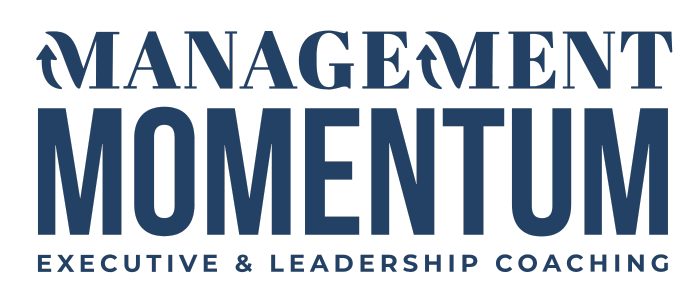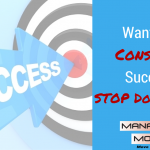Navigating the Mid-Career Crisis
Okay, so maybe it is not a crisis…but it’s no picnic, either. On one hand, you feel you should be grateful for your income, the hard-earned respect you’ve gained in your field, and a job that many people would feel extremely lucky to have; on the other hand, the meaning has gone out of it for you (or was never there), and success has taken its toll. The thought of another ten or twenty years sounds pretty awful.
Welcome to the Mid-Career Crisis.
Mindset before action- My all-time favorite quote is by Swiss psychiatrist Carl Jung: “Until you make the unconscious conscious, it will direct your life and you will call it fate.” If you are in a career funk, you have some mental work to do before you put yourself out there—especially if you want to make a great choice and not give up most of your income (see The 5 forbidden actions below). At first it might feel like you have no choices except for in the extreme sense which is to either quit your job or stay unhappily where you are. You don’t want to be unhappy at work, but your mind is telling you to “gut it out.” Meanwhile, your heart is telling you that you deserve to find happiness and meaning in your career, and that you can have a life of more than just work, sleep and an annual vacation.
It’s important to understand that our current business culture worships action. The message we all receive is that if you want to change something, then spring into action and make the change happen. That thinking can be a mistake for a person in a high-level career; making an impulsive leap without first looking can increase the chances of having to do it all over again in a year or two. As uncomfortable as it may sometimes be to delay action, it is critical to a positive, long lasting outcome. Plus, the world is more complicated than it was when you started your career. There are complexities in the market and in your own career history that deserve some thought and reflection and later on, research.
Grab a legal pad and prepare to do some writing as you take the following steps:
- Make a list of what you really want at this age and stage. This exercise is easier said than done because of our own negative mental chatter—or what prolific author Dr. Gay Hendricks calls “back talk.” Let’s say the first thing on the list is: To wake up feeling excited about my work. Great! Commendable. But the back talk in our head says, “You still have kids in school. You can’t afford to screw this up.” The strategy for dealing with the voice in our heads is to just continue anyway—in spite of the voice. List at least 10 things you WANT in your life and work. Imagine that by some twist of fate you are able to have the exact life and work you want. And don’t forget to include how much income you want. Taking a pay cut is not a requirement for increased career satisfaction.
- Settle into this unsettled phase of life. The sooner you settle in to this phase of uncertainty, the sooner you will have clarity and direction. Mary LoVerde, author of the book The Invitation: When You’re Ready to Take Your Next Step, encourages her readers to “embrace ambiguity” as part of the process of creating a new life. Ambiguity is painful. We don’t want to be unsettled. But leaning into it and accepting that it is temporary will be most helpful.
- Deal with your baggage. Yes, you have career-related baggage, and yes, it shows. Your baggage could have come from a wide range of circumstances such as a layoff, a missed promotion, a 10-year stint of near constant mergers and acquisitions, or a new boss who is (fill in the blank: crazy, neurotic, evil, lazy, incompetent, political, self-serving, narcissistic, overwhelmed, racist, or sexist). During my six years as a recruiter, my job was to uncover this hidden element in candidates. I called it “professional trauma” and it’s real. It will follow you to your interviews and your next step in life unless you deal with it. Give yourself the gift of some time with a coach, therapist, counselor or spiritual advisor to work through your professional grievances.
- Assess your situation. Once you have done the mental work, you will be capable of a more accurate perspective in assessing your individual situation. To see how far off you really are from your “I want” list, go back to the first assignment and give it a rating on a scale from 1-10, where 1 equates to your life is a total disaster, and 10 equates to all your dreams have come true. Where are you currently? Draw it out on a piece of paper and then answer these questions: What’s working about your current circumstance? What are you most proud of (list at least five things for every 20 years of career)? Finally, what attitude or thought process (not action) do you need in order to close that gap between where you are and where you want to be?
- Don’t throw away your past. In my experience, the best, most gratifying career changes somehow utilize or re-use your history and valued experience. A combination of burnout and stress plus Hollywood movies can cause us to have fantasies of extreme change (e.g., the powerful trial attorney gives it all up to open a flower shop and then finds the love of her life; or the burned-out couple moves to the jungle to do monkey research and then lives happily ever after). But extreme change is not always necessary. The healthier you become mentally, the more resourceful you will become in your thinking about yourself and your future.
One example is a client who was so unhappy in his high-level career that he was actually getting physically sick. His doctor told him he needed to reduce his stress or he could suffer dire consequences. Something clicked in his head and he agreed to make some small changes that had a big impact. He began to take his un-used vacation time and proposed to his boss that he work from home two days a week—and to his shock, his boss easily said yes. He stopped responding to every email he was cc’d on and simply stopped attending meetings that were not directly necessary for his role. No one seemed to notice. He also allowed himself to explore all kinds of career change in the process. He considered going to law school, writing a book, becoming a speaker. He also took up fly-fishing—a lifelong wish —and spent more time puttering. To my utter surprise, he stayed at his current company and has even been promoted. He is a different person. Years later he is still happy and amazed at how unhappy he had to become before making some basic but life-changing tweaks. There are at least five solid options for change where you could be happier and more satisfied, and live a life of more meaning—without an extreme or impulsive leap. The key is to find your five. - Give it time. Give yourself six months to a year to explore and consider ideas and options. It’s a process. Your key guidepost in all of this is what you WANT. From that want list you can explore myriad options such as having your own company, buying a franchise, consulting, developing your thought leadership, working in the same industry but a different company or culture, going back to school or gaining some additional certifications (e.g., Project Management Certification), or putting together a plan for a big promotion. Yes, it will feel like a roller coaster at times, but all you can do is hang on and enjoy the ride. You have earned some time for reflection and deep consideration.
The 5 Forbidden Actions
These actions are forbidden because they can actually work strongly against you until you have done the mindset work (getting your head on straight) which should be led by what you want particularly at this age and stage of life. As tempting as it is to do exactly these five things—you will be in a stronger place once you deal with your head trash and figure out what you really want.
- Quitting your job abruptly
- Sending out your resume
- Trolling the internet to “see what’s out there”
- Talking to recruiters
- Activating your network





